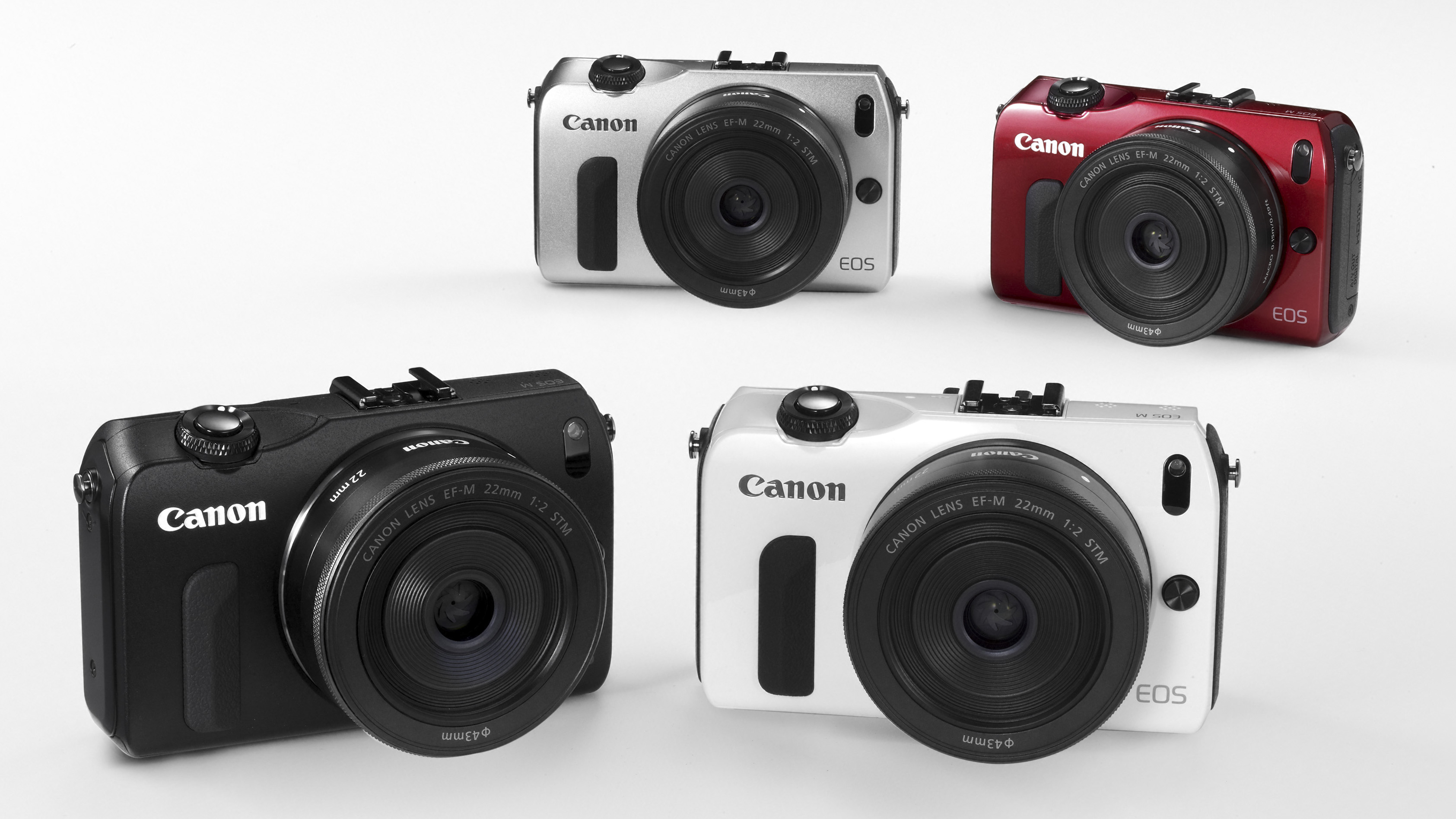Canon EOS M vs Canon EOS 650D
Same sensor, different body - but which is right for you?

This means that the external Speedlite is not quite as powerful as the pop-up flash built on to the 650D, which has a Guide Number of 13m at ISO 100. A pop-up flash is also handier to access if you're in frequent need of extra illumination.
In addition it's worth remembering that both the 650D and the EOS M are compatible with larger Speedlites and flashguns through the hotshoe.
Canon EOS M vs Canon EOS 650D handling
There's quite a significant difference between how these two cameras will be handled, especially as the M strives to keep size to a minimum.
For those wanting quick access to certain functions and modes, the 650D may make more sense as it includes the traditional mode dial favoured by other Canon DSLRs.

Canon has stripped this dial right back to the bare minimum for the EOS M, with most of the controls needing to be accessed through the menu system or touch screen navigation.
With its larger size, the 650D also comes with a bigger grip, which some may feel more comfortable using.
Canon M vs Canon 650D frame rate
It was a little surprising to find that the EOS M can't match the 650D's frame rate, shooting at 4.3fps, compared with the 650D's 5fps.
Sign up for breaking news, reviews, opinion, top tech deals, and more.
As there's no mirror to move out of the way and slow-down operations, it would have been fair to assume that the camera could shoot quicker, not slower.
However, David Parry from Canon UK has explained to us, "I believe it's to do with the shutter mechanism inside, the mechanism isn't really built for speed, so it won't actually perform at the same kind of rate.
"Obviously you've got the same electronics inside, there's no reason why the sensor and the processor can't run at the higher speed, but I believe it's to do with the mechanism inside."
Although there's not a huge amount of difference between 4.3fps and 5fps, if you find yourself shooting a lot of fast-action subjects, such as sport, it may be something to consider.
It's also worth noting that as the EOS M uses hybrid autofocusing, it's likely to be slower than using the 650D via the viewfinder, which uses phase detection only in this mode.
Canon EOS M vs Canon 650D battery life
As the EOS M is constantly using the rear LCD screen, you can expect the battery life to be severely affected.
Canon claims that CIPA testing has shown the M can last for around 220-230 shots, which is around half the promised 440 shots from the 650D.
Shooting with a camera all-day can easily see 220 shots get eaten up, so if you're the kind of person who hardly puts the camera down, the 650D will probably be more appealing - or of course you could also buy an additional battery for the M.
Canon EOS M vs Canon EOS 650D price
At the time of launch, the 650D and EOS M share a pretty close RRP, at £799 and £769, respectively (both with 18-55mm kit lens).

However, the Canon EOS 650D price has already dropped down to £699 in places, and is already available to buy.
The M won't be on the market until around October, and with pre-orders looking likely to be high, it may be that the price won't come down for a while yet.
Conclusion
Comparing these two cameras is very much of a tale of swings and roundabouts. What you gain on one, you may feel that you lose on the other.

If you're on the verge of buying a camera and you can't wait until October to get your hands on one, then it may be a safe bet to plump for the 650D now.
Also, if you're a fan of viewfinders, traditional buttons and handling and don't want to add the extra expense of a mount adapter for any existing optics you've got, then the 650D may seem like a wiser choice.
However, if you're looking for something small that won't take up too much room in a bag, but you have the option to add your own/extra lenses if you require, then the EOS M is a good choice.

It's also worth bearing in mind what you want to do with your photography, if you're happy to leave the camera in Auto mode and don't need (very) quick access to manual settings, then the M may be ideal. However, if you want to learn more about the technical details of photography, and want all the benefits of a traditional DSLR, then the 650D may be a better bet.

Amy has been writing about cameras, photography and associated tech since 2009. Amy was once part of the photography testing team for Future Publishing working across TechRadar, Digital Camera, PhotoPlus, N Photo and Photography Week. For her photography, she has won awards and has been exhibited. She often partakes in unusual projects - including one intense year where she used a different camera every single day. Amy is currently the Features Editor at Amateur Photographer magazine, and in her increasingly little spare time works across a number of high-profile publications including Wired, Stuff, Digital Camera World, Expert Reviews, and just a little off-tangent, PetsRadar.